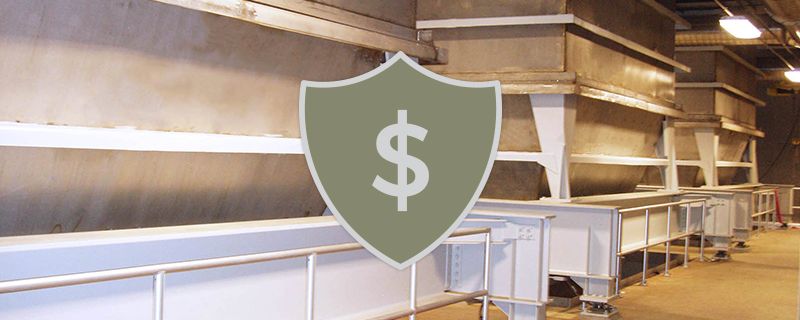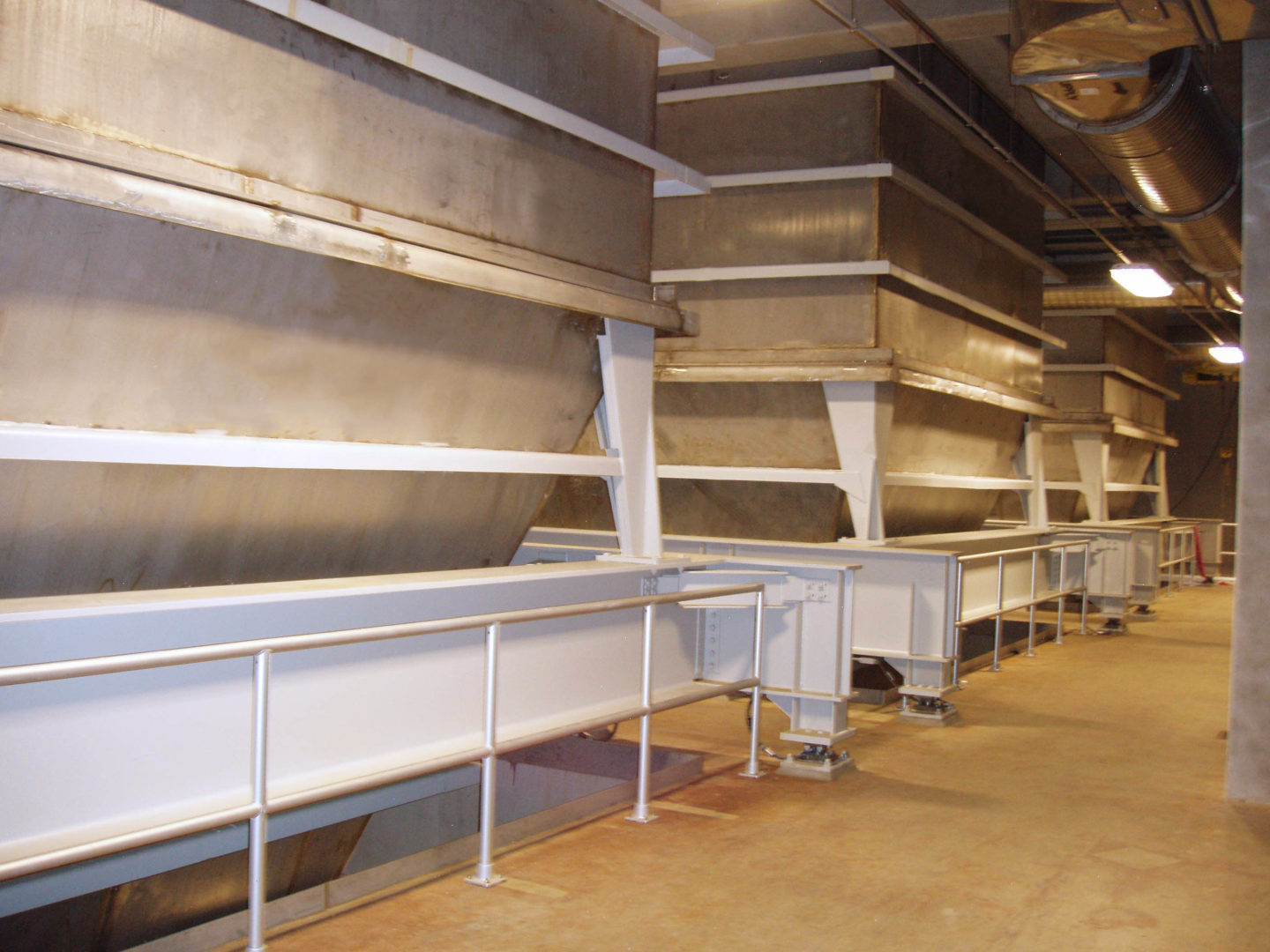When considering the cost of a Live Bottom Hopper for storage and delivery of Biosolids there are two important things to consider:
- The initial cost of the equipment
- The lifetime cost of ownership of the equipment
Initial cost for Live Bottom Hoppers
The initial cost of a live bottom hopper can vary from $25,000 to $1MM+ depending on the size, materials of construction, and complexity of the system as defined in the project scope. Typically, Live Bottom Hoppers can be a key component of more complex Bio-Handling systems such as Truck Load-out Stations, Receiving Stations, or Bio-stabilization Systems.
Lifetime cost for Live Bottom Hoppers
Live bottom hoppers are also known as Live Bottom Bins, or Live Bottom Screw Feeders. To handle the needs of the wastewater industry, JMS live bottom hoppers are most commonly constructed of Stainless Steel with sizes and orientation that can be customized to suit requirements. Mild steel or fiberglass hoppers are not recommended for the harsh conditions of the wastewater treatment plant.
Aspects that can affect the Live Bottom Hopper cost are:
- Size: Sizes vary in range from 10 yds3 to 500 yds3. Obviously the larger the hopper, the higher the initial cost. Typically when the size of the hopper doubles, the cost will increase.
- Whether the Live Bottom Hopper is a metered or non-metered discharge. A metered discharge screw carries a premium.
- Controls for the equipment, whether they are simple, or a sophisticated totally automatic system. A basic live-bottom hopper system can be controlled with a manual panel designed for operator control. An automated system will utilize load cells and automatic level controls that can be set for fill rates and levels.
- Shafted or shaftless screws. Shafted screws have a slightly higher up-front cost, but will not require the cost of liner replacement at a later time.
- Shipping from the manufacturing site to the customer location. Most live-bottom hoppers are either built as a legal standard size load, or in the case when a larger hopper is required, sections are transported and field welded or bolted into place.
The typical life of a well-built Live Bottom Hopper system is 15-20 years. During that time repairs and replacements are generally few. Shaftless Live Bottom owners should prepare for liner replacement every few years. Replacement liners can cost in the thousands of dollars, and one must include the cost of downtime and man hours for this replacement.
JMS has been manufacturing water and wastewater treatment equipment for over fifty years. During that time they have pioneered many design and manufacturing enhancements that reduce that maintenance needs of the equipment, and increase equipment longevity.
Greg Hyde joined the JMS Sales and Marketing Team as Product Manager | Material Handling. Greg has over 30 years of experience in material handling systems, having held high level engineering, sales and business management positions with large full line conveyor manufacturers. He is responsible for overall support and growth of the JMS Bio-HANDLING product line. Outside of work, Greg is a founding member of the “Jammin’ 4 Water” (Water Charities Fundraising Inc.). In regards to his position, Greg says, “ JMS has a rich history in design, quality and material handling. I’m excited to be part of this great team and look forward to guiding the Bio-HANDLING product family for long-term growth.”



